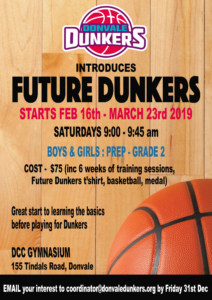1 June 2018
The Committee strongly encourages Clubs to direct their coaches coaching in under 14 and younger age groups to play Man to Man defence.
The only exception is when a team has no substitutions for the game.
Definition of zone defence: See diagram below:
What is a Zone Defense?
A Zone Defenseis different from a Man-to-Man Defensein that instead of guarding a player, each defender is responsible for guarding an area of the court – or zone, and any offensive player that comes into that area. Zone defenders move their position on the court (within their designated area) in relationship to where the ball moves.
Zone Defenses can adopt a variety of player alignments, such as but not limited to the below;
| 1-2-2 Zone | 3-2 Zone | 2-3 Zone |
| | |
The shaded zones in the diagrams above indicate the area each defender is designated to guard, as opposed to defending an individual player.
Why don’t we allow Zone Defense to be played?
Whilst it is in many cases, the purpose of a No Zone Policy is simply explained, ‘to teach players correct man-to-man principles’, there are in fact a number of developmental skill objectives – both individual and team, offensive and defensive.
Zones limit an offensive teams’ ability to penetrate the key, forcing the offense to take their shots from a greater distance. In the younger age groups, it is common for players to not yet possess the strength and coordination to execute a shot attempt whilst maintaining correct shot mechanics (shooting technique).
As a result, defensive skills such as ‘closing out’ and ‘containment’ are not taught and/or adopted with any significant value until later years.
Zone defenses generally do not apply much pressure to the offensive team, therefore developing an understanding and ability of ‘ball movement’ through ‘passing’ and ‘dribbling’ can also be restricted. Whilst being able to execute this against a zone is also important, like many aspects of skill development, building blocks are often the most effective way of skill acquisition.
Adopting to play a zone in the younger age groups can also develop complacency on the defensive end. Players can often play out of stance or upright, lose court vision and not develop correct ‘boxing-out’ techniques.
What is a Man-to-Man Defense?
Given that we have defined what constitutes a zone defense and why it is important it not be played in U8-U14 competition, it’s best we also define what a Man-to-Man Defense is.
Man-to-Man Defense has each defender assigned to a designated offensive player rather than an area on the court. As a defender, you are accountable for containing (staying between your player and the basket) your designated player when he/she has the ball.
Teaching Man-to-Man Defense is often considered more complicated than coaching a Zone Defense. That is largely due to the perception that the many required individual defensive skills are more closely associated with Man-to-Man principles. Whatever the case, if you can work on teaching the following skillsets, you’re well on your way to playing an integral role in the development of your young players.
Defensive Stance –Feet should be approximately shoulder width apart, with your knees bent (knees over toes), back straight and head up. You weight should be evenly balanced on the balls of your feet and your arms should be up with palms forward.
Defensive Slides –When guarding your opponent on the move, we refer to what is called a defensive slide. Using quick, short steps (without crossing your feet over) you move your strong side / lead foot first. If you use your ‘Defensive Stance’ as a starting point, your first step see’s your stance become wider, then your second step see’s you return to balance. The aim when sliding is to stop your offensive players intended path to the basket – turn them to an alternative direction or make them pick the ball up.
Note:There are more advanced defensive movements, however we encourage the more traditional; ‘Defensive Slide’ be adopted in the early phases of development.
Man-to-Man Defensive Spacing
This is where we start throwing in team defensive concepts – these are much easier to instill as offensive spacing develops. The two go hand-in-hand and if repetition is provided during team training sessions, development will naturally occur at a faster rate.
Ball –when you are guarding the player with the ball. In your defensive stance (defensive slide if on the move) you want to maintain about an arm’s length between you and the player with the ball.
Denial –when your offensive player is one pass away from the ball. In your defensive stance, you want to be one step off your player, towards the ball. Encourage an open defensive stance, chest up the court to maintain vision on both your own player and the player with the ball.
Help –when your offensive player is two passes away from the ball. Again in your defensive stance, you want to be on split line (an imaginary line length ways down the middle of the court). This discourages the offensive team to penetrate the key but also allows enough time for you to ‘close out’ should the ball get quickly passed to your direct opponent.
Close Out –when the ball is passed to your offensive player, you must move towards them quickly and in a low stance (balanced). Your first 1-2 steps are long, your last several are short and quick as you throw your hands up to deter a shot. Because you are already in a low stance, you are able to shift into a defensive slide without losing balance.
Man-to-Man Rules and Rotations
There are so many concepts available to adopt when it comes to man-to-man rules and rotations, we won’t confuse the intent of this document by diving too deep. When introducing man-to-man defense to young basketball players in a team environment, we encourage you to utilize the Shell Drill as your main teaching base. Below is a link to a video showing a basic execution of Shell Drill; https://www.youtube.com/watch?v=t9GWqQI-XVM


